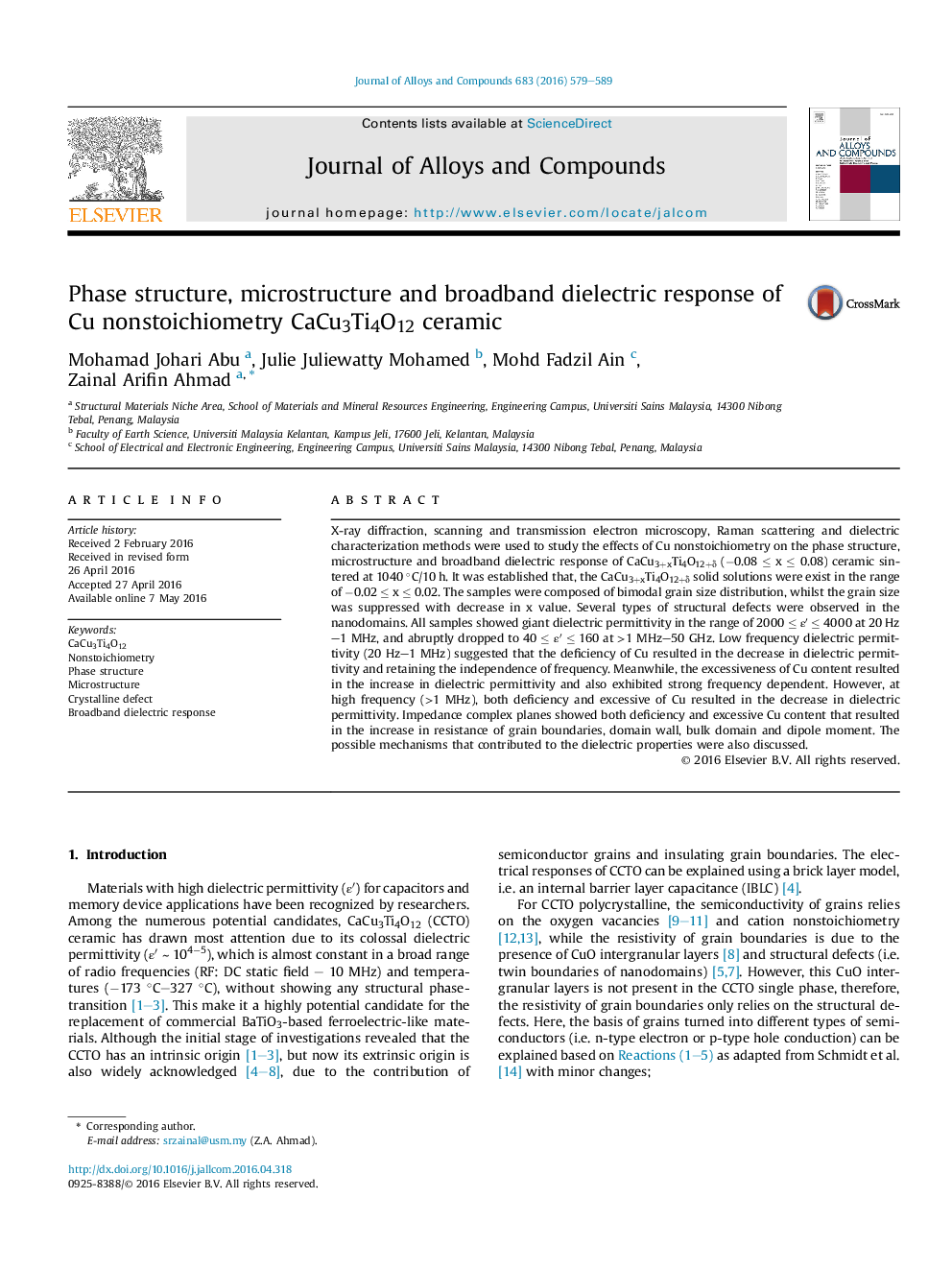| کد مقاله | کد نشریه | سال انتشار | مقاله انگلیسی | نسخه تمام متن |
|---|---|---|---|---|
| 1605507 | 1516210 | 2016 | 11 صفحه PDF | دانلود رایگان |

• CaCu3+xTi4O12+δ solid solution was determined at −0.02 ≤ x ≤ 0.02.
• Cu vacancy and CaCu antisite were first experimentally discovered by TEM analysis.
• Frequency dependence of dielectric properties for CCTO is dependent with Cu content.
• Five types of dielectric polarization for CCTO were identified in the measuring frequency of 20 Hz–50 GHz.
X-ray diffraction, scanning and transmission electron microscopy, Raman scattering and dielectric characterization methods were used to study the effects of Cu nonstoichiometry on the phase structure, microstructure and broadband dielectric response of CaCu3+xTi4O12+δ (−0.08 ≤ x ≤ 0.08) ceramic sintered at 1040 °C/10 h. It was established that, the CaCu3+xTi4O12+δ solid solutions were exist in the range of −0.02 ≤ x ≤ 0.02. The samples were composed of bimodal grain size distribution, whilst the grain size was suppressed with decrease in x value. Several types of structural defects were observed in the nanodomains. All samples showed giant dielectric permittivity in the range of 2000 ≤ ε′ ≤ 4000 at 20 Hz–1 MHz, and abruptly dropped to 40 ≤ ε′ ≤ 160 at >1 MHz–50 GHz. Low frequency dielectric permittivity (20 Hz–1 MHz) suggested that the deficiency of Cu resulted in the decrease in dielectric permittivity and retaining the independence of frequency. Meanwhile, the excessiveness of Cu content resulted in the increase in dielectric permittivity and also exhibited strong frequency dependent. However, at high frequency (>1 MHz), both deficiency and excessive of Cu resulted in the decrease in dielectric permittivity. Impedance complex planes showed both deficiency and excessive Cu content that resulted in the increase in resistance of grain boundaries, domain wall, bulk domain and dipole moment. The possible mechanisms that contributed to the dielectric properties were also discussed.
Figure optionsDownload as PowerPoint slide
Journal: Journal of Alloys and Compounds - Volume 683, 25 October 2016, Pages 579–589